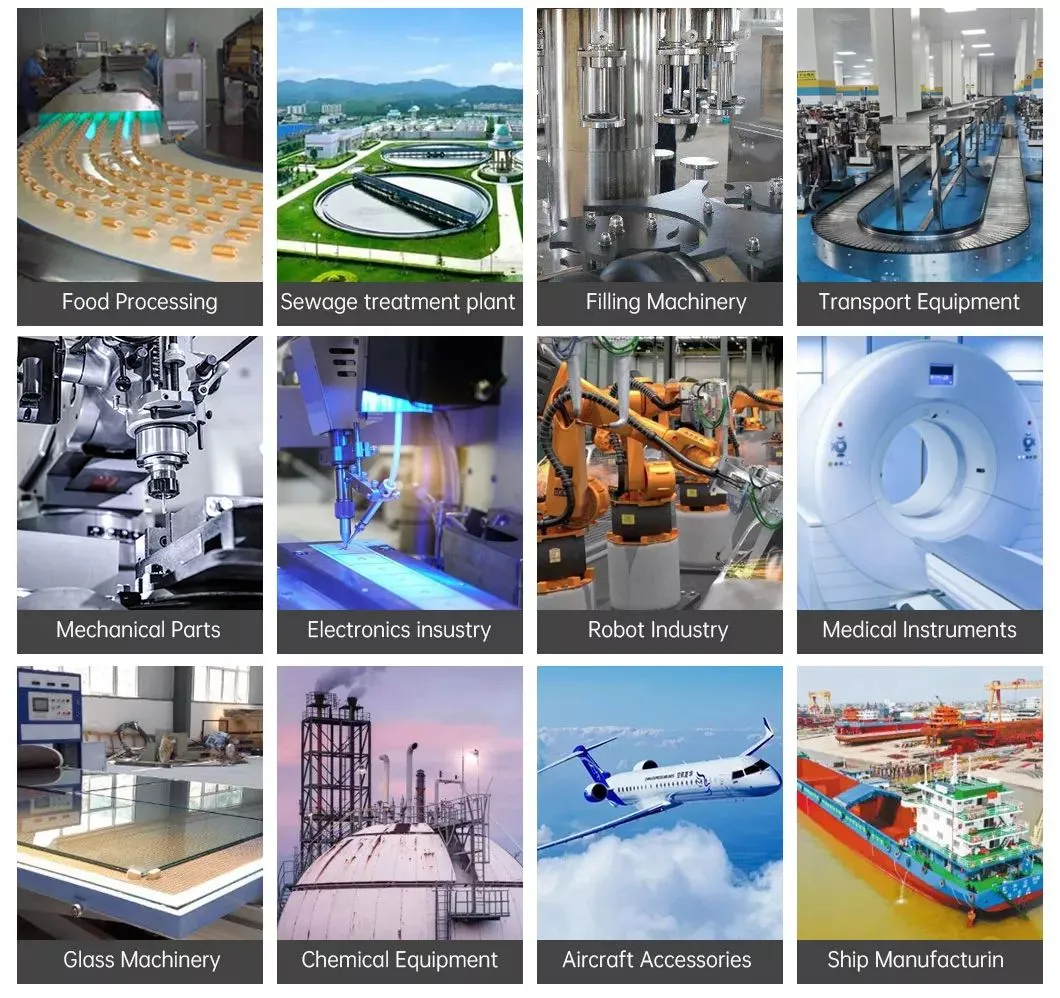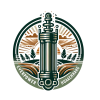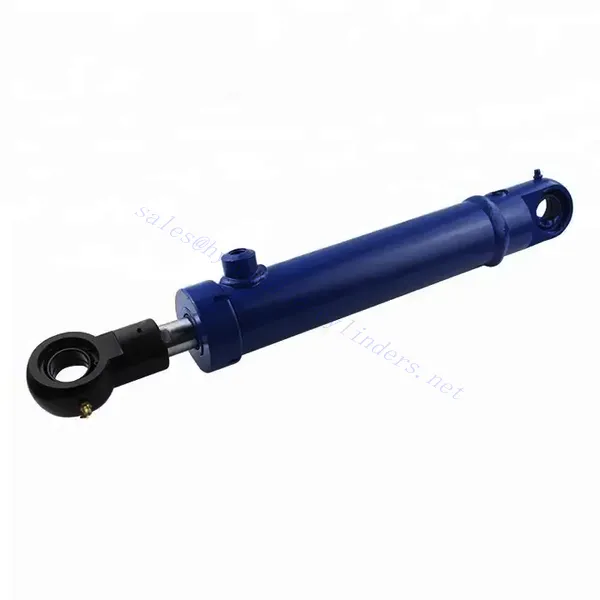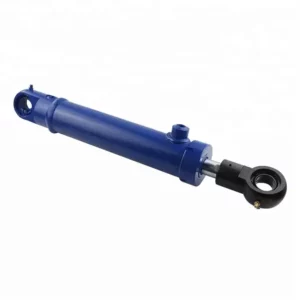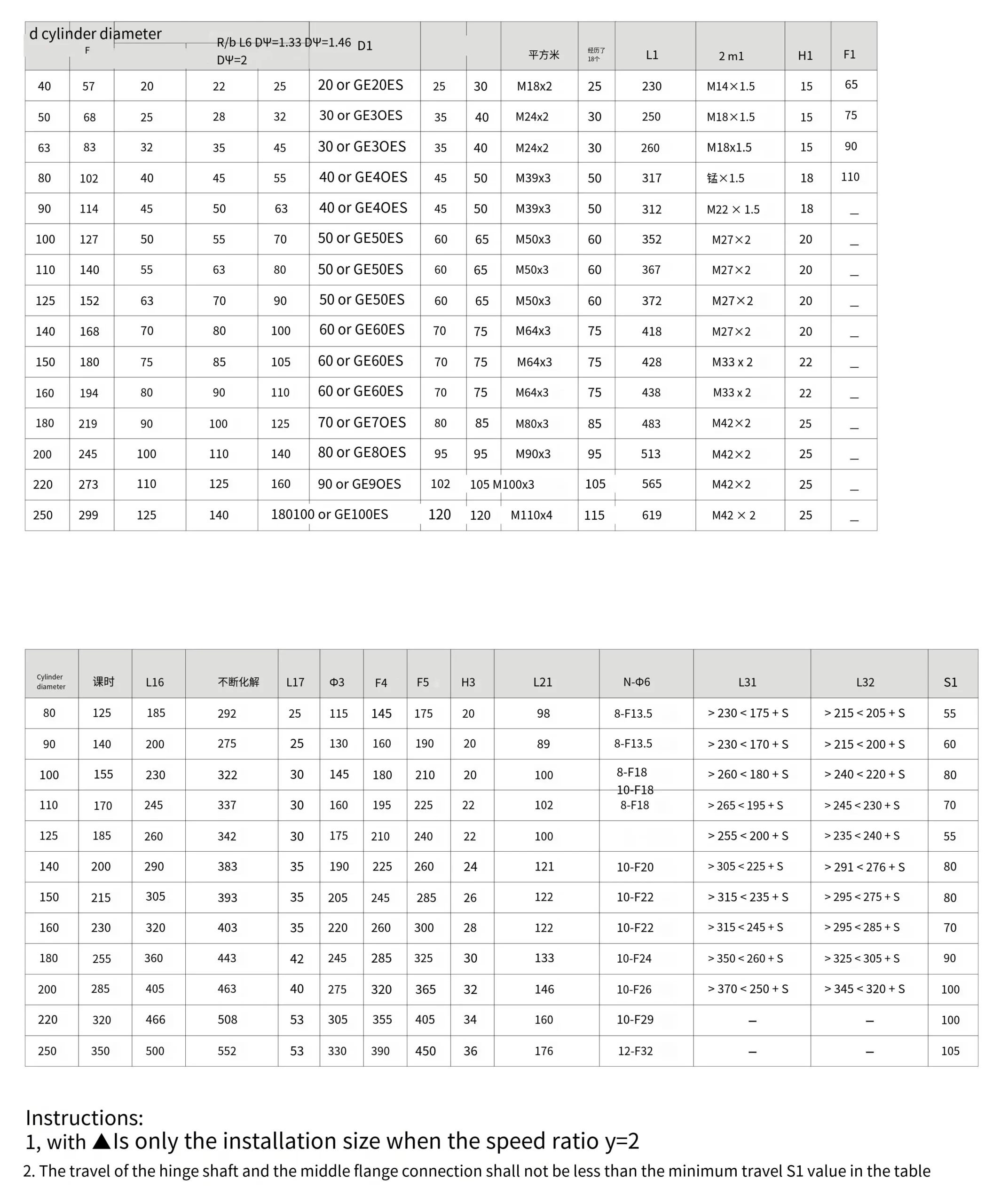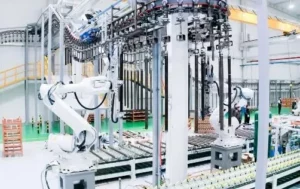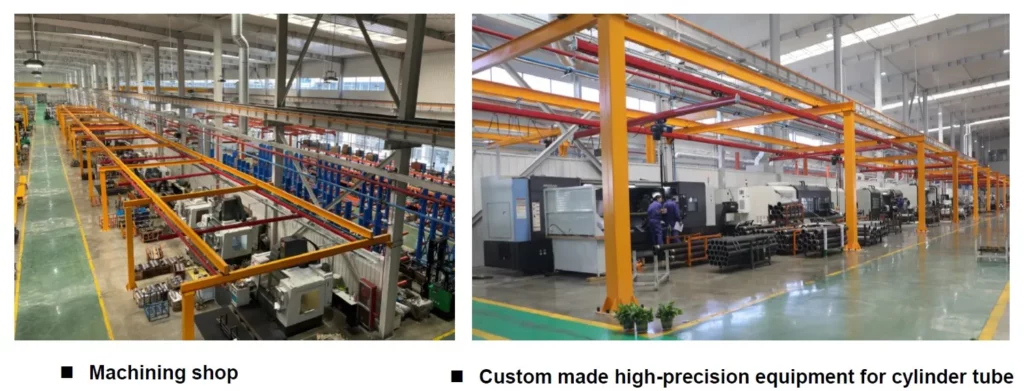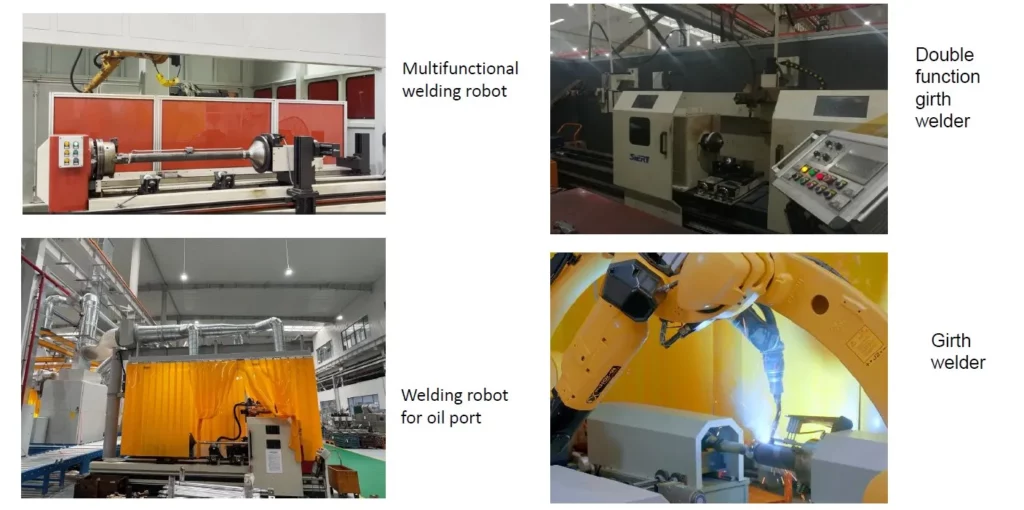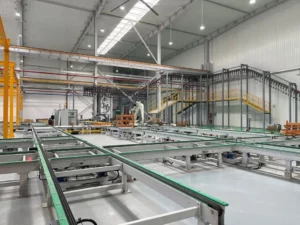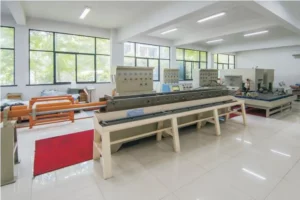Piston Rod End With External Thread Connection Engineering Hydraulic Cylinder
As one of the hydraulic cylinders manufacturers, suppliers, and exporters of mechanical products, We offer hydraulic cylinders and many other products.
Please get in touch with us for details.
Mail:[email protected]
Manufacturer supplier exporter of hydraulic cylinders.
Piston Rod End With External Thread Connection Engineering Hydraulic Cylinder
The piston rod end with an external thread connection is located at the end of the engineering hydraulic cylinder piston rod. It usually has threaded sections that allow for the safe fastening of various components, such as mounting brackets, cracks, or other load-bearing structures.
HSG series engineering hydraulic cylinder is a double-acting piston rod hydraulic cylinder. Installation mode adopts earring type. According to the connection between the cylinder head and the cylinder block, there are three kinds of external thread connection, internal card critical connection, and flange connection. Engineering hydraulic cylinder is mainly used in construction, lifting, mining, and other hydraulic systems.
HSG Engineering Hydraulic Cylinder Parameter:
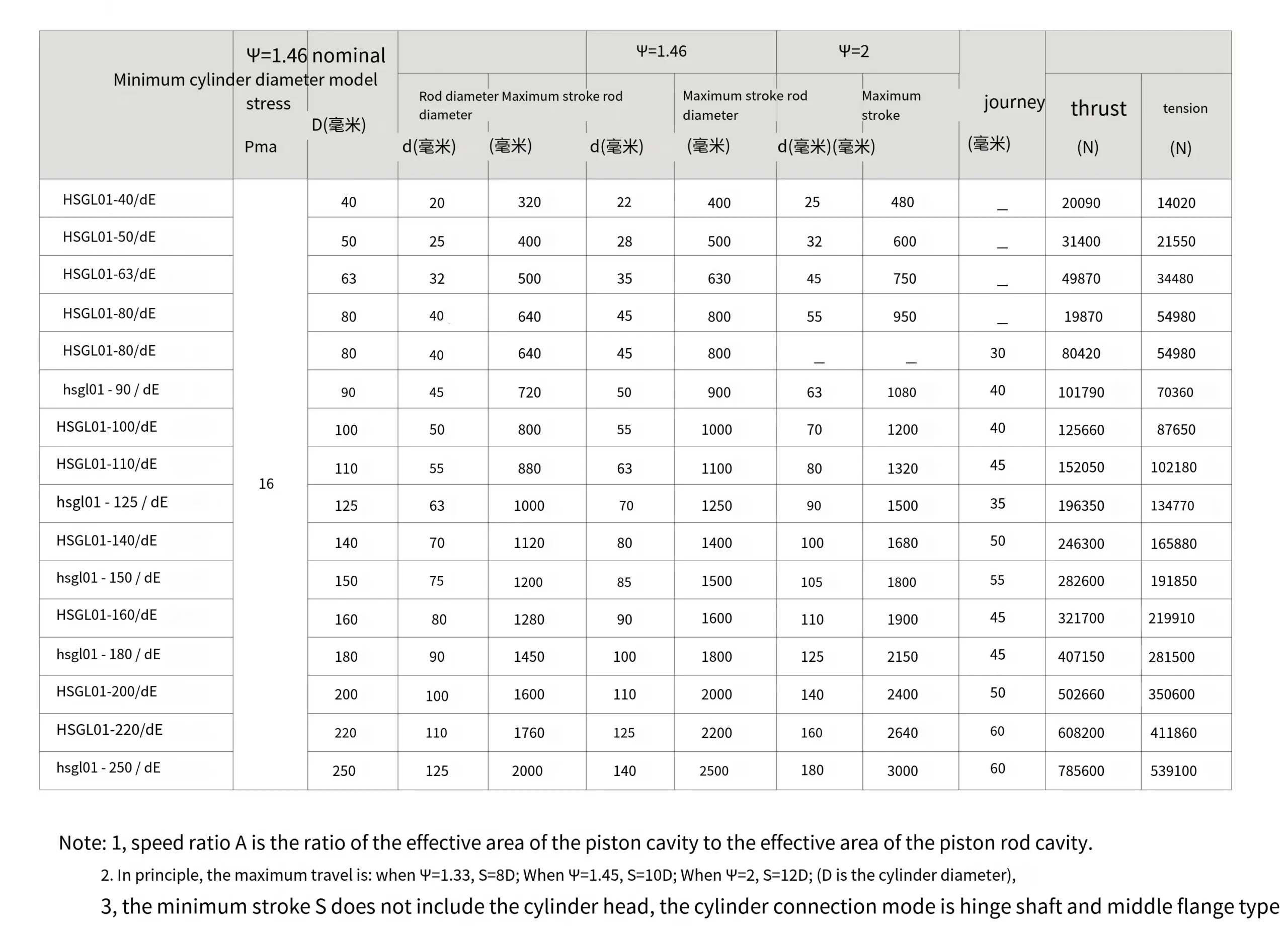
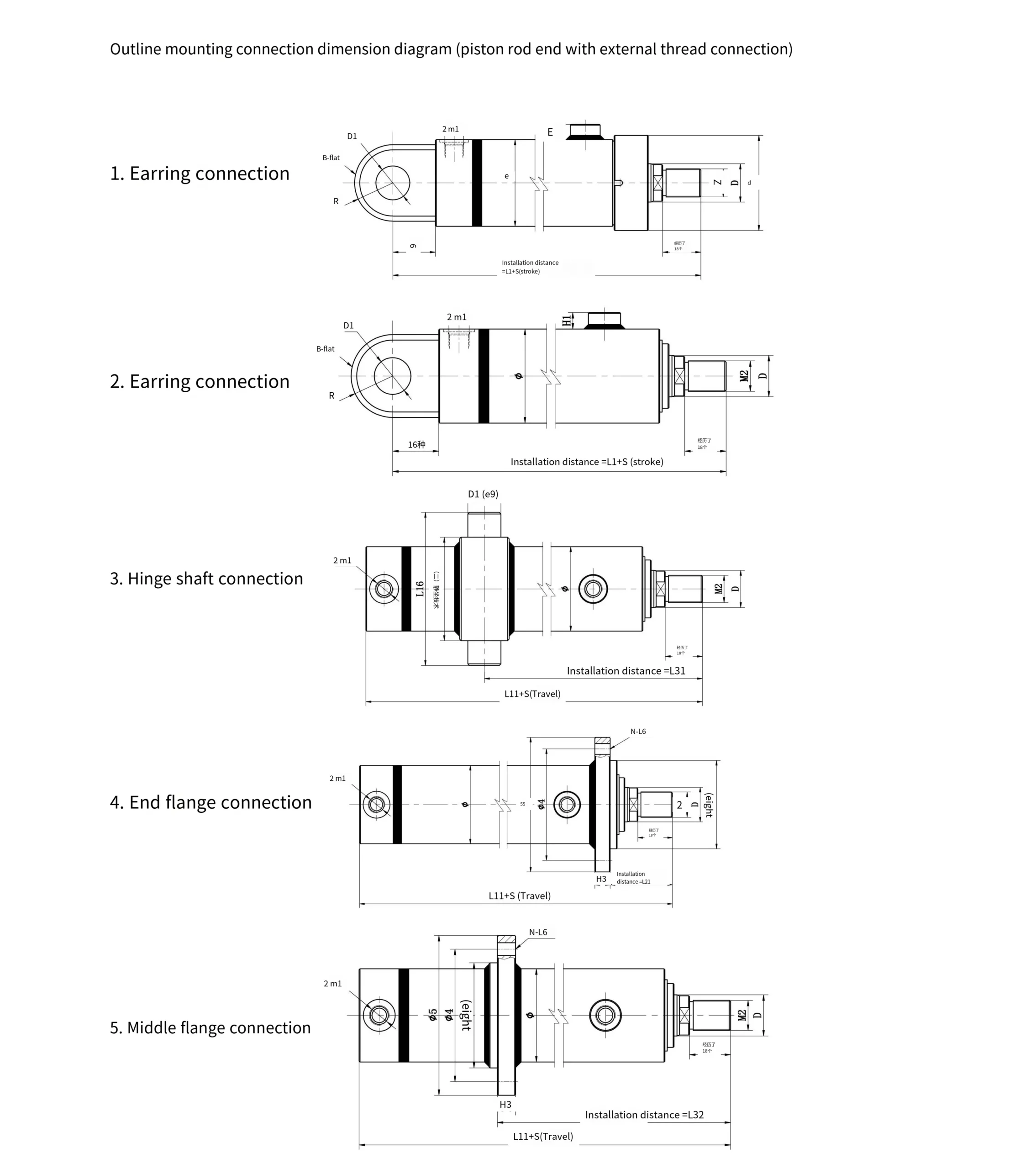
HSG Engineering Hydraulic Cylinder Advantages:
The piston rod end with an external thread connection offers several advantages in engineering hydraulic cylinders:
- Versatility:
- Threaded connections provide the flexibility to connect various components or load-bearing structures, allowing customization and adaptation to different application requirements.
- Secure Fastening:
- External threads ensure a secure and reliable connection, minimizing the risk of loosening or detaching during operation.
- This enhances the safety and stability of hydraulic cylinder assemblies, especially in demanding or high-strength applications.
- Ease of Maintenance and Replacement:
- External threaded connections simplify maintenance and replacement of parts, allowing for quick disassembly and reassembly.
- This helps inspect, repair, or replace damaged or worn parts, reducing downtime and improving overall system efficiency.
HSG Engineering Hydraulic Cylinder Applications:
The external thread connection on the piston rod end offers versatility and convenience in various engineering applications, including:
- Mounting Brackets and Supports:
- The threaded connection enables the attachment of mounting brackets or supports to the hydraulic cylinder.
- These brackets or supports provide additional stability and structural support to the cylinder assembly, ensuring proper alignment and load distribution.
- Linkage Mechanisms:
- External threads allow connecting rod mechanisms, such as grooves or ball joints, to the rod end.
- These links facilitate the transfer of force and motion between hydraulic cylinders and other mechanical components, allowing for controlled movement and precise positioning.
- Load-Bearing Structures:
- The threaded connection fasteners the load-bearing structure or equipment directly to the piston rod end.
- This enables the hydraulic cylinder to apply force and support the weight of external objects or machinery, making it suitable for lifting, pushing, or pulling heavy objects.
How To Repack A Hydraulic Cylinder?
Repacking a hydraulic cylinder involves replacing the seals and other components that may have worn out or damaged over time. Here’s a general step-by-step guide on how to repack a hydraulic cylinder:
- Preparation:
- Ensure that the hydraulic system is depressurized and the cylinder is fully retracted.
- Gather the necessary tools and replacement seals or seal kits for your cylinder model.
- Consult the manufacturer’s documentation or service manual for specific instructions or precautions.
- Remove the Cylinder:
- Disconnect any hydraulic lines or fittings connected to the cylinder.
- Remove any mounting brackets or components that may be attached to the cylinder.
- Carefully detach the cylinder from the equipment or machinery it is installed on.
- Disassemble the Cylinder:
- Securely hold the cylinder and remove the piston rod end cap or head using appropriate tools.
- Extract the piston, piston rod, and related components from the cylinder barrel.
- Inspect the components for any signs of wear, damage, or corrosion.
- Remove Old Seals:
- Locate and remove the old seals, including piston seals, rod seals, and any other seals in the cylinder.
- Carefully clean the seal grooves and internal surfaces of the cylinder barrel and piston rod.
- Install New Seals:
- Lubricate the new seals with a compatible hydraulic fluid or sealant, as the manufacturer recommends.
- Install the new seals in their grooves, ensuring proper orientation and alignment.
- Use seal installation tools or suitable improvised methods to prevent sealing damage during installation.
- Reassemble the Cylinder:
- Reinstall the piston, piston rod, and related components into the cylinder barrel.
- Apply a thin layer of hydraulic fluid or lubricant to the internal surfaces of the cylinder barrel and piston rod.
- Carefully reattach the piston rod end cap or head, ensuring proper alignment and tightening to the manufacturer’s specifications.
- Test and Reinstall the Cylinder:
- Reconnect any hydraulic lines or fittings to the cylinder.
- Carefully reinstall the cylinder onto the equipment or machinery, ensuring proper alignment and mounting.
- Slowly pressurize the hydraulic system and check for any leaks or abnormal operation.
- Fully extend and retract the cylinder to ensure proper functionality.
- Maintenance and Testing:
- Regularly inspect and maintain the hydraulic cylinder to ensure optimal performance and prevent premature seal failure.
- Monitor for any signs of leaks, excessive wear, or other issues and address them promptly.
- Conduct periodic testing and adjustments as the manufacturer recommends or based on the specific application requirements.
Capability & Capacity Of Factory:
(1) Assembly
We have a first-class independent research and development assembly platform. The hydraulic cylinder production workshop has four semi-automatic lifting cylinder assembly lines and one automatic tilt cylinder assembly line, with a designed annual production capacity of 1 million pieces. The special cylinder workshop is equipped with various specifications of a semi-automatic cleaning assembly system with a designed annual production capacity of 200,000 and equipped with famous CNC machining equipment, a machining center, a high-precision cylinder processing special equipment, a robot welding machine, an automatic cleaning machine, automatic cylinder assembly machine, and automatic painting production line. Existing critical equipment of more than 300 sets (sets). The optimal allocation and efficient use of equipment resources ensure the accuracy requirements of products and meet the high-quality needs of products.
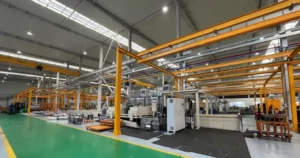
(2) Machining
The machining shop is equipped with a customized inclined rail turning center, machining center, high-speed honing machine, welding robot, and other related equipment, which can handle the processing of cylinder tubes with a maximum inner diameter of 400mm and a maximum length of 6 meters.
(3) Welding
(4) Painting & coating
With small and medium-sized cylinder automatic water-based paint coating lines, to achieve automatic robot loading and unloading and automatic spraying, the design capacity of 4000 pieces per shift;
We also have a semi-automatic paint production line for large cylinders powered by a power chain, with 60 cases per shift design capacity.
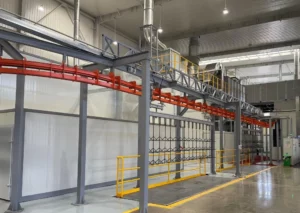
(5) Testing
We have first-class inspection facilities and test beds to ensure that the performance of the cylinder meets the requirements.
We are one of the best engineering hydraulic cylinder manufacturers. We can offer comprehensive engineering hydraulic cylinder stock. We also provide corresponding agricultural gearboxes. We have exported our products to clients around the world and earned a good reputation because of our superior product quality and after-sales service. We warmly welcome customers both at home and abroad to contact us to negotiate business, exchange information, and cooperate with us!
Take a Tour of Our VR Factory:
Take a tour of our VR factory with the following
How Does Forklift Hydraulic Cylinder Work?
Hydraulic Cylinder Application:
